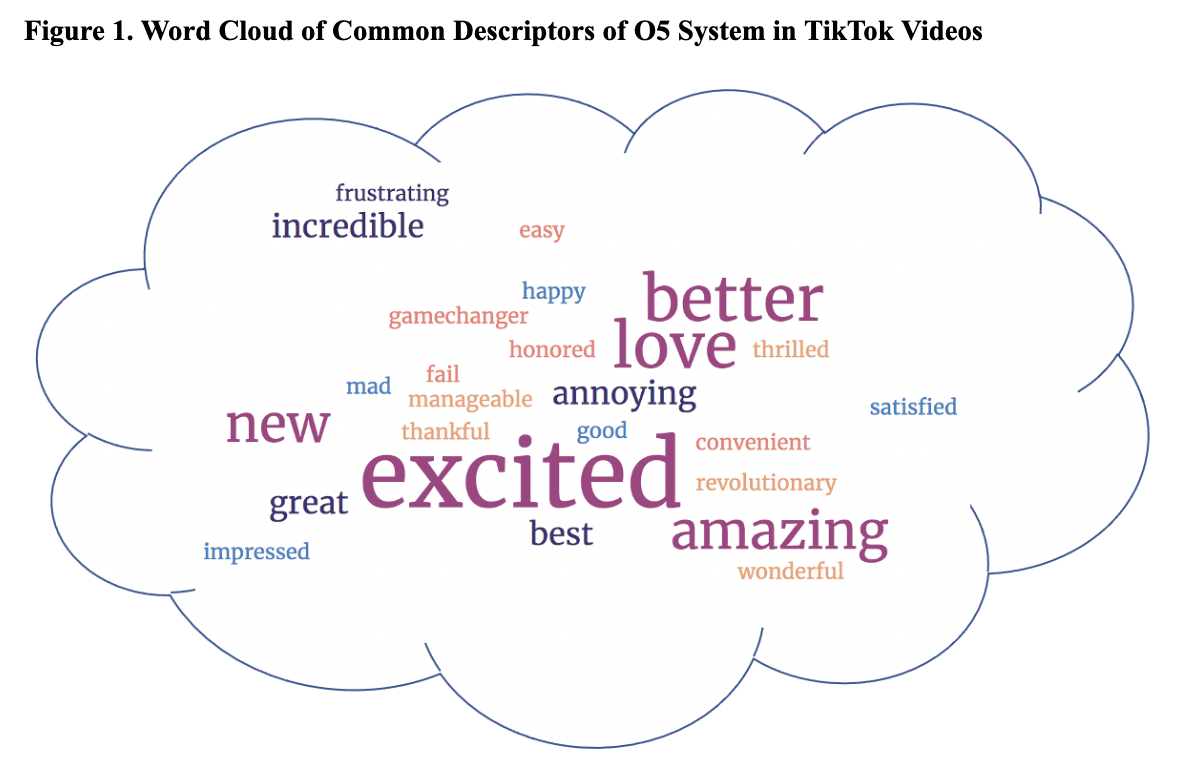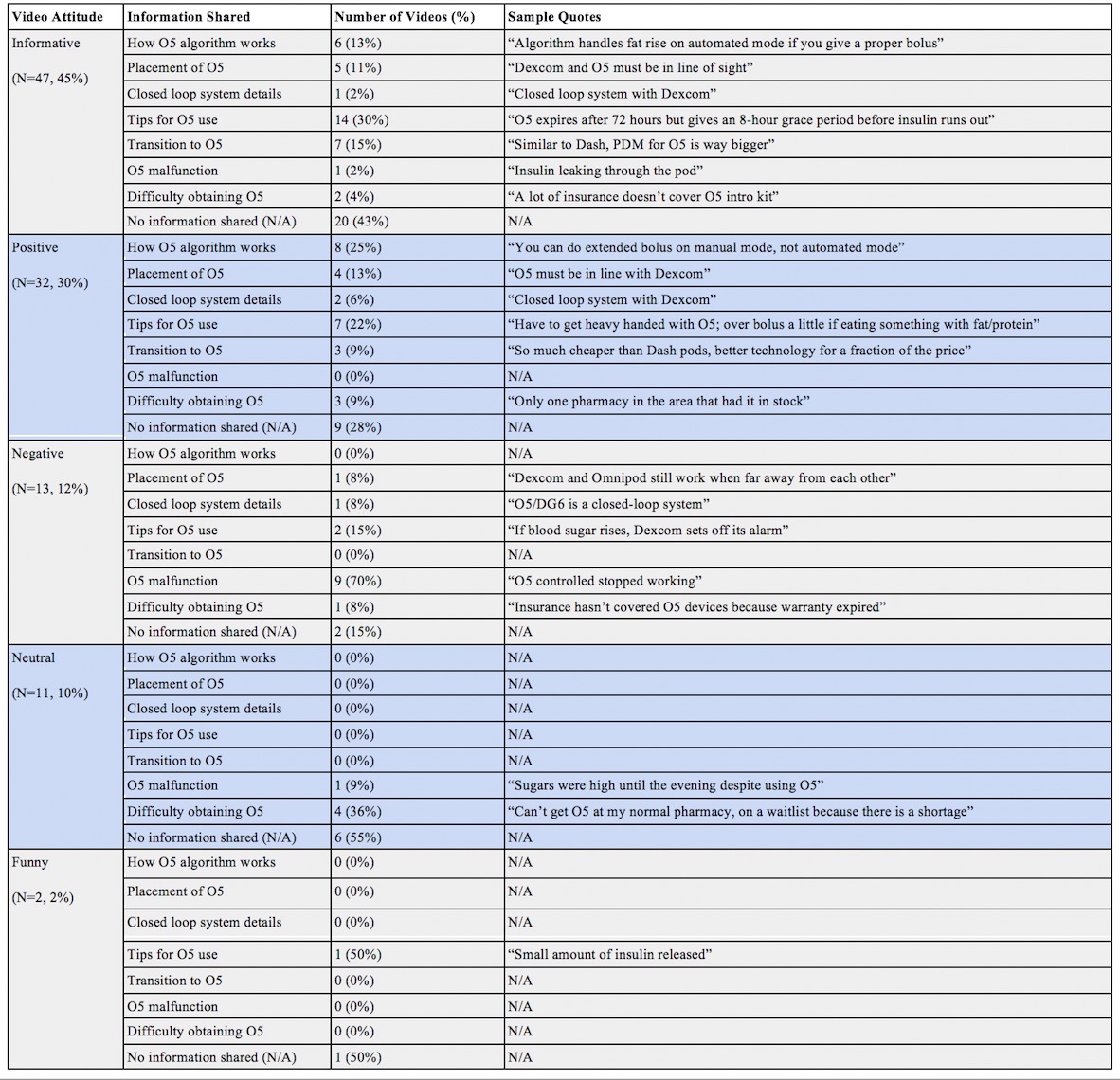Endocrinology: Type 1 Diabetes (T1 DM)
Endocrinology 1
182 - Analyzing Information regarding Type 1 Diabetes Omnipod 5 Device on TikTok
Saturday, April 29, 2023
3:30 PM - 6:00 PM ET
Poster Number: 182
Publication Number: 182.213
Publication Number: 182.213
Kara Sangiuolo, Cohen Children's Medical Center, Fairfield, CT, United States; Fiona P. Dubrosa, Cohen Children's Medical Center, New York, NY, United States; Ruth Milanaik, Cohen Children's Medical Center, Lake Success, NY, United States
.jpg)
Kara Sangiuolo, BA (she/her/hers)
Visiting Scholar and Clinical Research Assistant
Cohen Children's Medical Center
Fairfield, Connecticut, United States
Presenting Author(s)
Background: Type 1 Diabetes (T1D) patients often use automated devices to maintain proper blood sugar levels. The new Omnipod 5 (O5) is an automated insulin delivery system integrated with the continuous glucose monitor Dexcom G6 (DG6), forming a closed loop system. Videos discussing O5/DG6 have already amassed millions of views on TikTok, a popular video-sharing platform among teenagers.
Objective: To analyze the quality and content of O5-related videos to determine the type of information regarding T1D management that pediatric patients are exposed to online.
Design/Methods: The top 400 TikTok videos under the hashtag #omnipod5 were analyzed. Metadata was obtained using a web scraper. The following data were collected by trained coders: 1) numeric statistics (e.g., likes, views), 2) video topic category (e.g., education, demonstration), 3) creator age range/profession, 4) creator attitude, 5) mention of DG6, 6) discusses/shows how to use O5, 7) shares experience with O5/T1D, 8) discusses other T1D devices, 9) O5 pros/cons, 10) T1D/device inconveniences. Descriptive analysis was conducted in R.
Results: A total of 5,321,081 views in 105 videos met inclusion criteria. Video topics included patient experience (44%, n=46), demonstration (35%, n=37), and education (21%, n=22). 100% of videos were created by laypeople (T1D patients/caregivers): 8% (n=8) featured children, 78% (n=82) teenagers/young adults, and 14% (n=15) middle-aged adults. Overall, 39% of videos (n=41) discussed/showed how to use O5. See Table 1 for video creator attitude and information shared about O5. In 56% of videos (n=59), creators shared personal experiences with O5/DG6. Creators compared O5 to other T1D devices/technologies (i.e., Omnipod Dash, TSlim Insulin Pump) in 28% of videos (n=29). 26% of videos (n=27) discussed expenses/inconveniences of the O5/T1D treatment. See Figure 1 for common descriptors of O5.
Conclusion(s): TikTok provides a powerful community for disseminating information about T1D management. The majority of O5-related videos presented informative, positive reviews created by teenage/young adult T1D patients. However, the complete lack of medical professionals involved in creating this content was concerning. The millions of views that culminated in the few months since the release of O5 shows that viewers seek content on this important medical topic. Medical professionals must be more active in sharing information about novel medical devices such as O5 on social media. Additionally, medical organizations should have a greater online presence to reach young patients.


